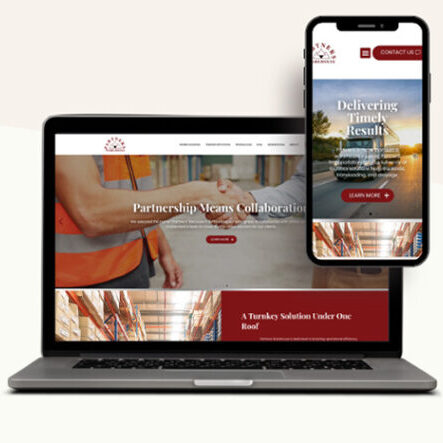How long has it been since you’ve visited your own website? If it’s been more than a few years, you may have a need to refresh your web content. But how do you know when it is time? How can you approach the review process in a way that ensures it is a valuable use of your time?
How often should I update my website content?
At Autumn, we’re not here to tell you that you should always re-vamp your website messaging or content every quarter, every year, or every three years. There isn’t an exact standard to meet; your business or industry may have different constraints that dictate when you should be updating your content (or adding more content). Not to mention, there is tremendous value in sticking with consistency in your overall message, so as to remain familiar, accessible and relevant to your audience.
Let’s say, for instance, that your company represents a small faction of a highly technical, ever-changing, or high-competition industry, which entices you to always present the most up-to-date and current information. In this case, you may want to share research and development updates on your website, or perhaps use social media to host a blog or discussion forum. Or, on the other hand, perhaps your brand image is more rooted in tradition, so you may find that your marketing messages are more consistent overtime and may not require such frequent oversight. Or, maybe your business could be described as being somewhere in the middle.
No matter how you categorize your business needs, it never hurts to pay a visit periodically – and keep the customer’s point of view in mind. When you are experiencing the website from the customer’s perspective, remember these three questions:
- Does my website emulate the sales experience that happens in real life?
- Does it inform my customers/audience full of the company’s products/service?
- How well does my website demonstrate the uniqueness of company/brand?
1. Emulate the sales experience:
Consider your sales staff – describe in three words what the sales experience is like (or what you would like it to be like) for your customer. Ask yourself: is the sales approach supposed to be highly technical and professional in nature? Or, do your customers appreciate a more friendly, community-type, or network-oriented approach? Do you work in a large field or industry that is constantly progressing, where competition is fierce and dialogue is plentiful? Or, are you experts in the traditional?
The key question to ask yourself is: would you describe your website in the same way?
When your website mimics the sales experience, your customers will know you better and will remember you more. Your customers will be familiar with the experience whether they are out in the field, in your store, or on our website – and that familiarity will breed brand trust and customer loyalty.
2. Inform your audience fully:
Your marketing message would be working if what you are saying about your company is being talked about amongst your customers, suppliers, and the wider industry network. If you don’t find that to be the case, consider what you’ve actually published on your website. Sometimes, what we try to communicate in writing just isn’t coming across. Here are a few ways you can gauge the messaging impact:
- Perform customer interviews
- Attend sales visits and see a sales presentation from your staff
- Attend seminars and industry conferences
- Use social media to gain insights into your industry and network
You may find that – more than just seeing your products and pricing – your customers want to see self-service options and owners manuals online. Or, maybe, your audience wants to see a little bit of “what’s behind the curtain.” That is, they want to see you share a little bit more about your method, your tools, your business development.
And don’t forget SEO! Identify those keywords people are using to talk about your company and industry. You have to remember that, although the message is important, but you have to get people to your website to read it, first!
These are relatively low cost solutions that can help you develop a clear and informative messaging strategy that works for your company and your network. Autumn has the experience to keep the dialogue moving and get a messaging strategy defined so that you can implement those same expectations in your website content.
3. Communicate the uniqueness of your brand:
Now, we’ve discussed brand identity in the past. Remember our last posts on the importance of typeface in sharing your brand with others? Using images and website functionality is enough to cover on a whole series of blog posts (stay tuned!), but consider what it is you’re NOT saying in the text and copy of your website.
Could it be that your company is the one leading innovation in your field, but maybe your customers don’t see or understand the role you play? Or maybe you are one of a thousand purveyors of a particular product within an industry, but it’s your experienced and technical staff or your commitment to reliability that delivers for your customer. Consider ways to reveal more about that uniqueness to your customer:
- Publish “meet the team” content, sharing your expertise.
- Publish technical bulletins, product catalog, information sheets, and other resources to increase customer familiarity and trust.
- Include FAQs, self help forums, and blog posts to demonstrate your experience.
- Apply appropriate language (SEO keywords!) and tone to attract your audience.
Autumn has a knack for finding out what really speaks to your audience and brings them to your door (or, website!). If you’re looking for a fresh perspective, we have a qualified team of professionals available to talk it over.





